Posts Tagged: chrysalis
Monarch 'Cats Sleeping with the Aphids
Sleeping with the aphids...that's what this monarch caterpillar was doing. It lived--and quite hidden at that--through the freezing cold, the rain,...
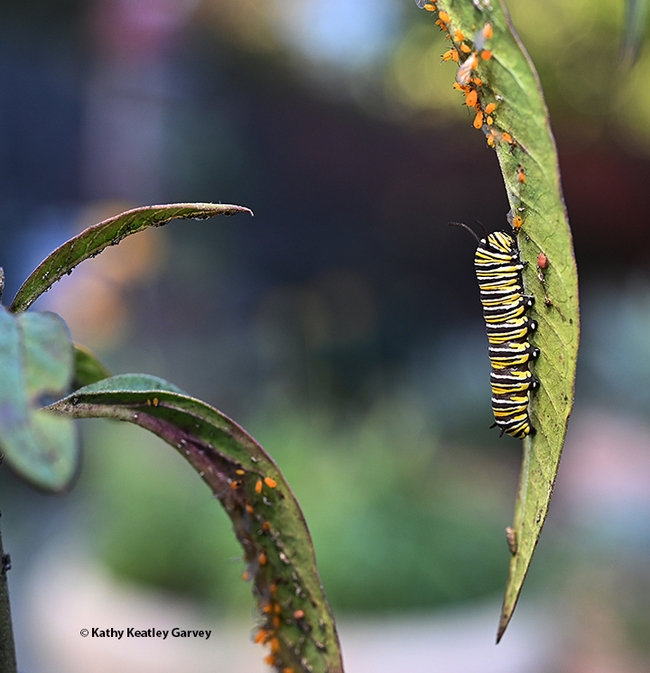
A monarch caterpillar sharing a milkweed leaf with oleander aphids on Dec. 8, 2023 in a Vacaville garden. (Photo by Kathy Keatley Garvey)
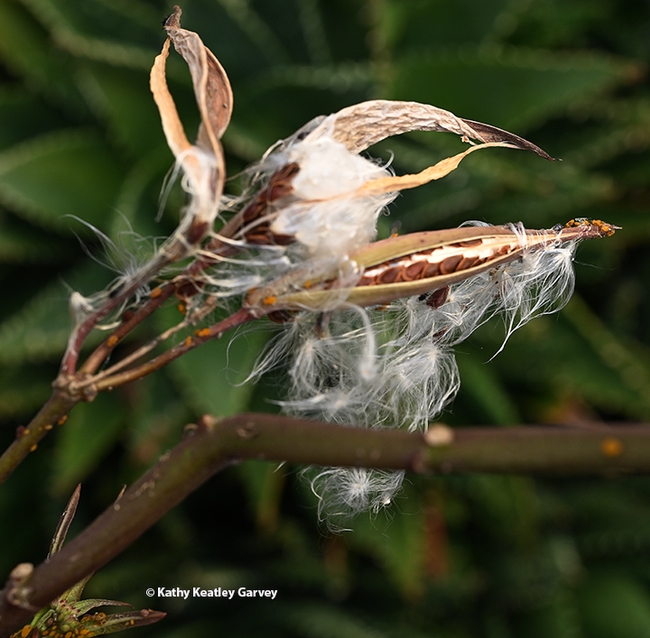
Milkweed going to seed on Dec. 8, 2023 in a Vacaville garden. (Photo by Kathy Keatley Garvey)
Perseverance Prevailed
Perseverance prevailed. The third instar monarch caterpillar we found munching on the remnants of our cut-back milkweed on Jan. 23 in Vacaville,...
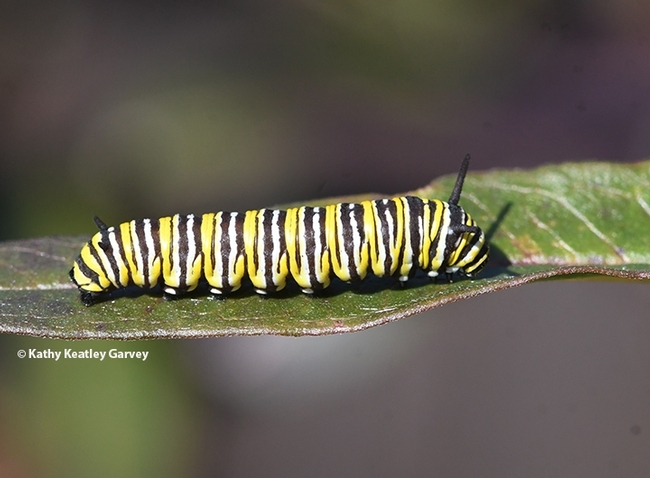
A winter monarch caterpillar munching on the remnants of milkweed on Jan. 23 in Vacaville, Calif. (Photo by Kathy Keatley Garvey)
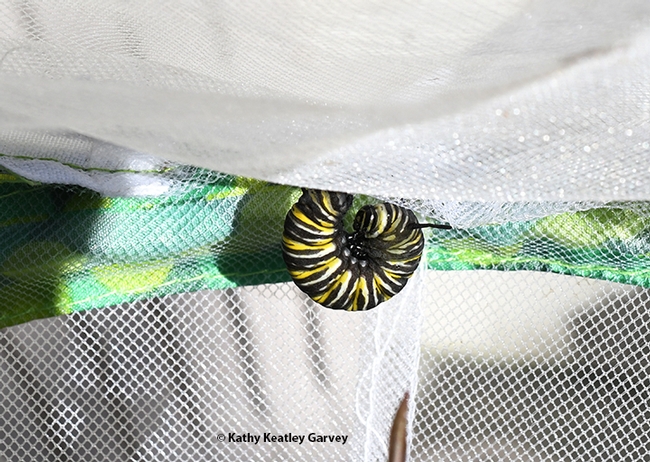
The caterpillar is about to "J" and pupate. (Photo by Kathy Keatley Garvey)
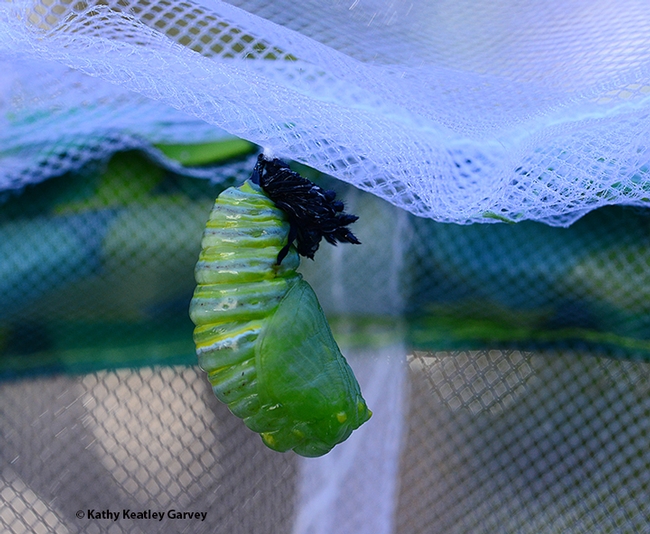
It's almost a chrysalis. (Photo by Kathy Keatley Garvey)
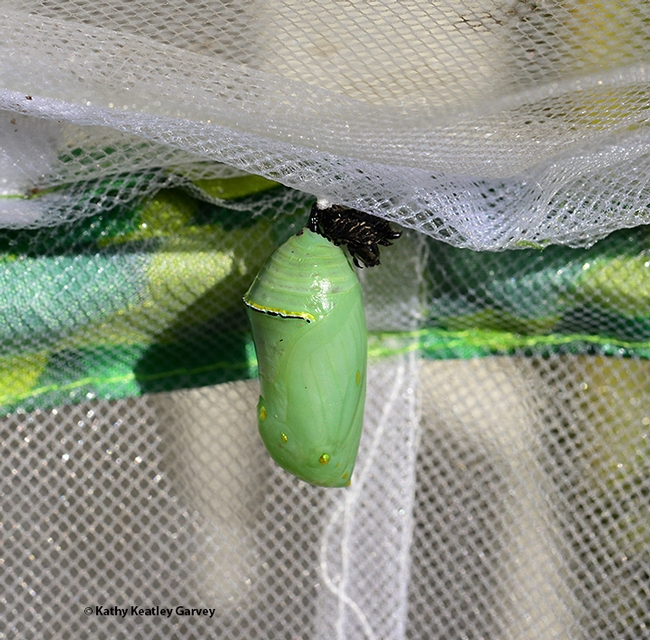
The formation of the chrysalis is complete. (Photo by Kathy Keatley Garvey)
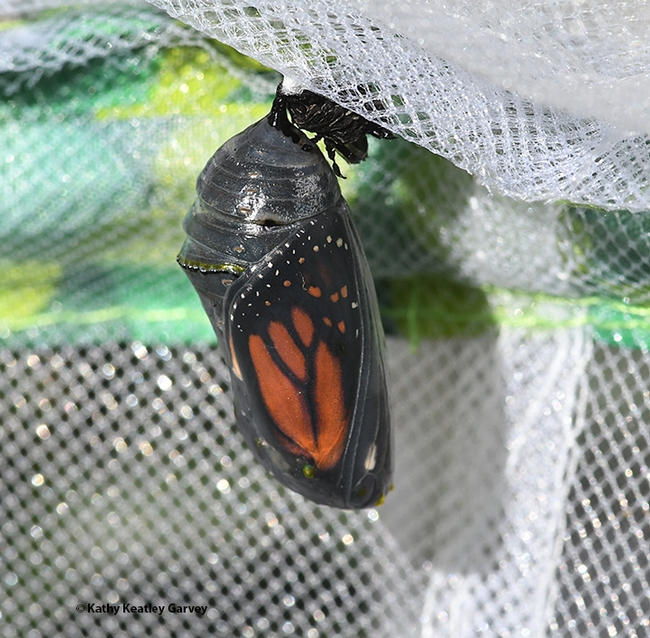
The iconic monarch wings are visible through the translucent chrysalis. (Photo by Kathy Keatley Garvey)
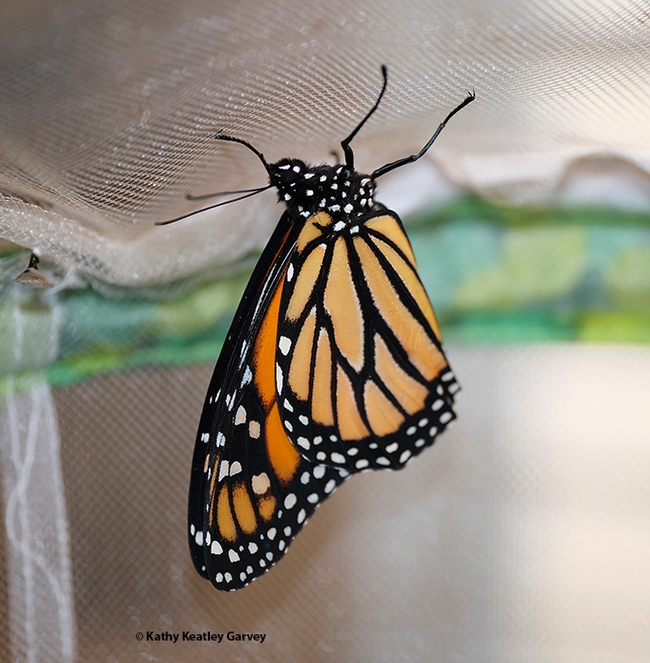
New life! A monarch butterfly, a male, drying its wings. (Photo by Kathy Keatley Garvey)
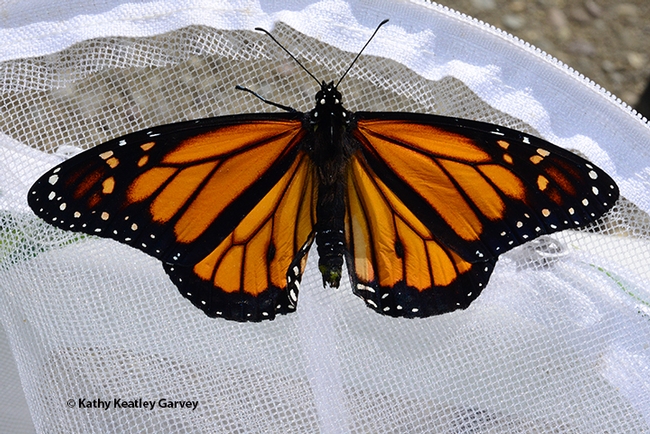
The male monarch spreads its wings. (Photo by Kathy Keatley Garvey)
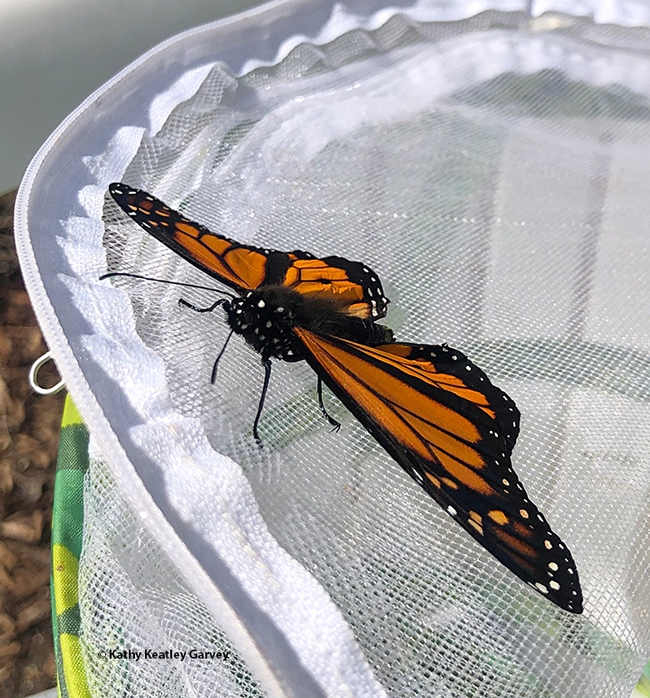
Ready to lift off! Shortly after this image was taken, the male monarch fluttered away. (Photo by Kathy Keatley Garvey)
Why We Need to Teach Science in Elementary School
Two adults, apparently not science aficionados, recently asked me: "What is entomology?" Quick answer: insect science. "What is a...
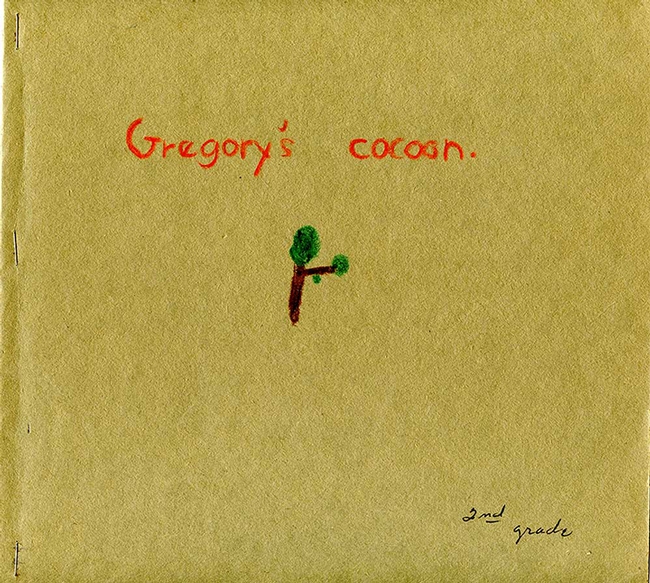
This the cover of second-grader Greg Kareofelas booklet on monarchs. He now serves as an associate at the Bohart Museum of Entomology, UC Davis, and as a tour guide for non-profit organizations.
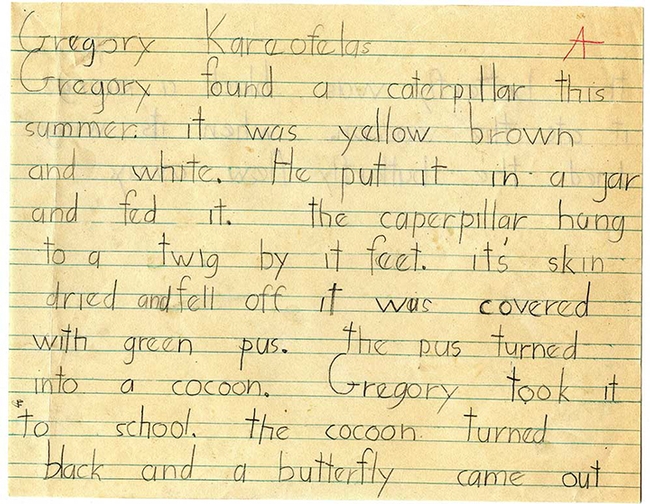
This is Page 1 of second-grader Greg Kareofelas booklet on monarchs.
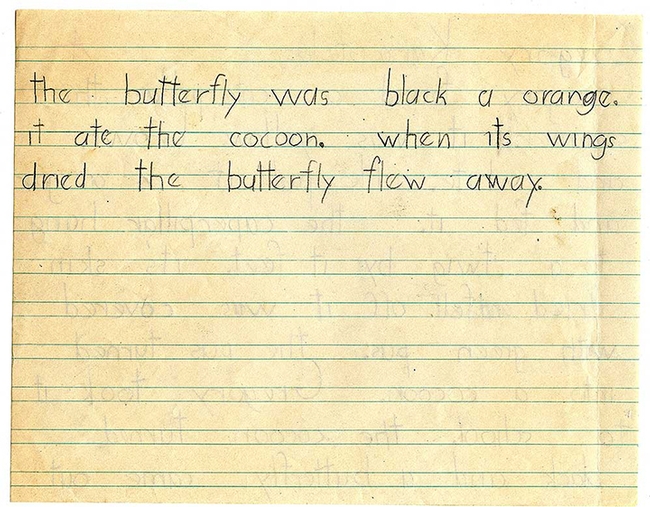
This is Page 2 of second-grader Greg Kareofelas booklet on monarchs.
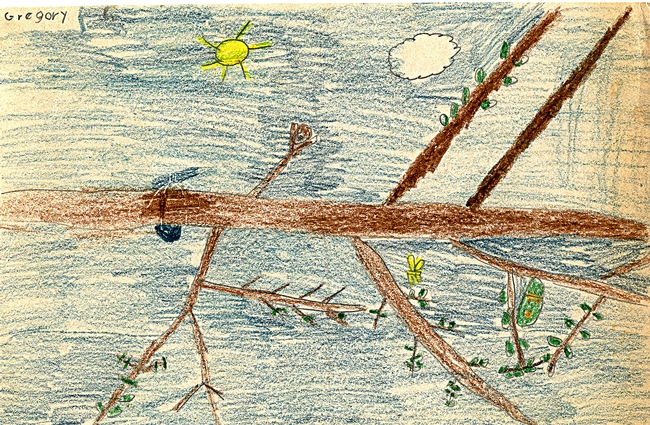
As a second-grader, Greg Kareofelas displayed a keen interest in science and acute observations about the monarch life cycle. This is his illustration in a monarch booklet.
Why Our Car Is Chortling 'Merry Chrysalis'
Our compact car gathers no reindeer antlers, no Rudoph nose, no Santa hat. Zero, zip, zilch, nada. Our HOUSE exudes “Merry Christmas!”...
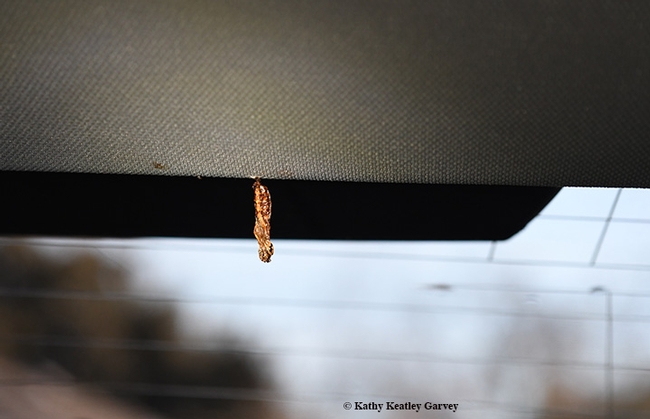
A Gulf Fritillary chrysalis inside the author's car, by the rear window. (Photo by Kathy Keatley Garvey)
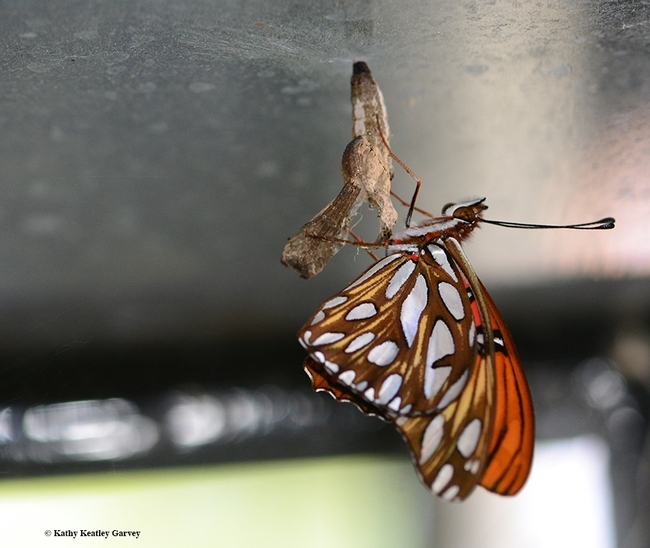
This is what a normal eclosure looks like: a Gulf Fritillary has just eclosed in Vacaville, Calif. (Photo by Kathy Keatley Garvey)
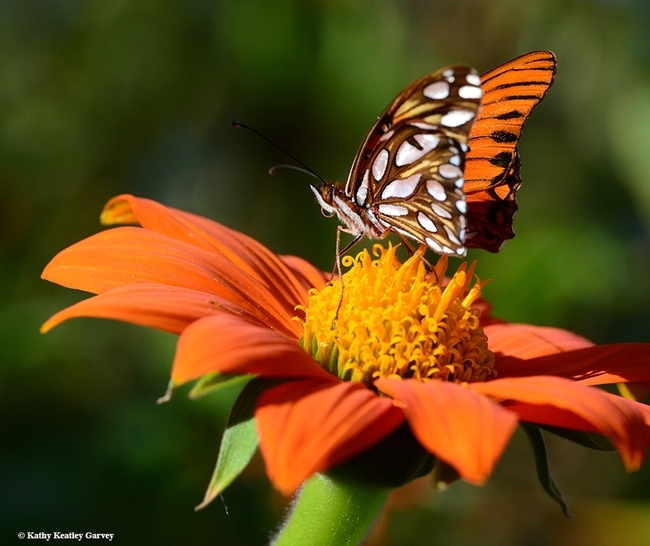
The Gulf Fritillary is a reddish-orange butterfly with silver-spangled underwings. This one is on a Mexican sunflower (Tithonia)in the summer. (Photo by Kathy Keatley Garvey)
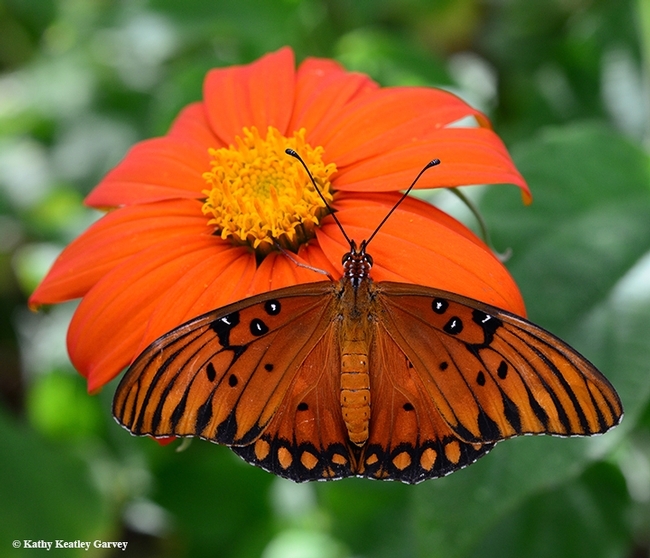
A Gulf Fritillary spreads its wings in the summer. It's nectaring on a Mexican sunflower (Tithonia) in Vacaville, Calif. (Photo by Kathy Keatley Garvey)
Nobody Said Mother Nature Is Perfect
Some people are born good-looking. Some have the gift of gab. And some are lucky enough to be born smarter than the rest of us. Whether we like it or...
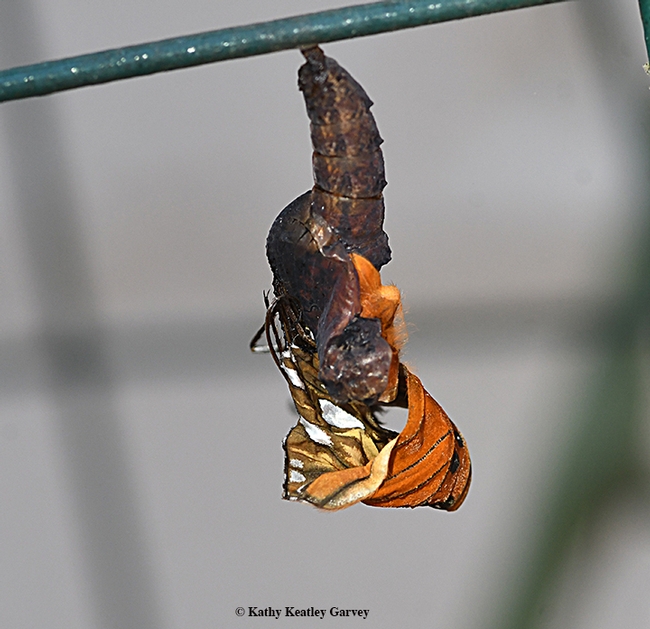
A Gulf Fritillary butterfly that never eclosed. (Photo by Kathy Keatley Garvey)
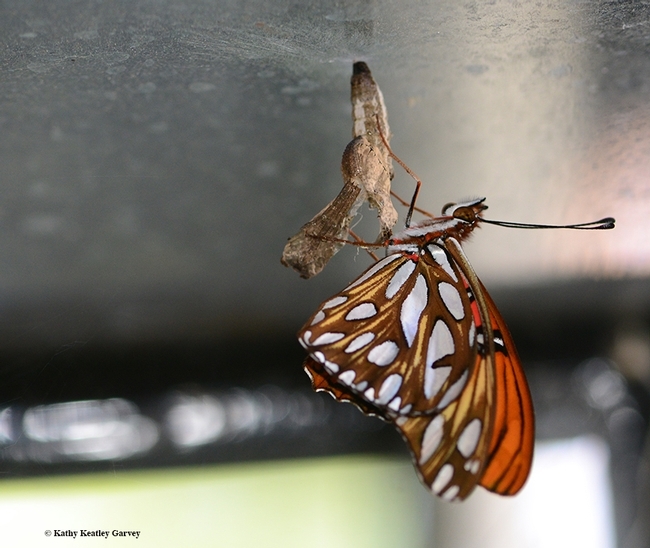
A newly eclosed Gulf Fritillary. (Photo by Kathy Keatley Garvey)
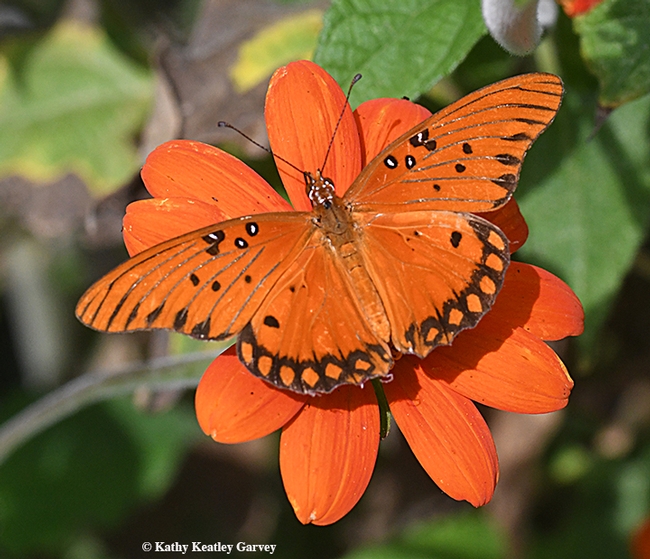
A Gulf Fritillary, one of Mother Nature's perfect specimens, covers a Mexican sunflower (Tithonia). (Photo by Kathy Keatley Garvey)

